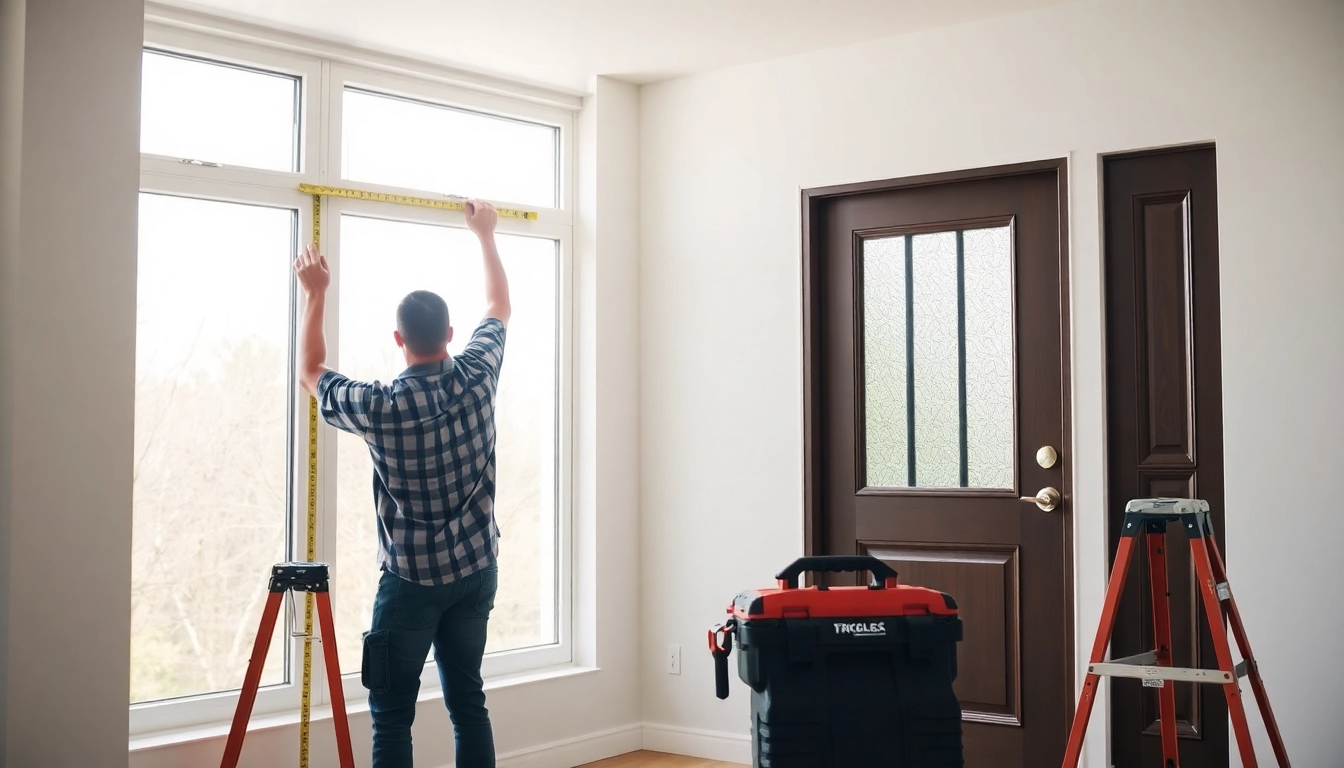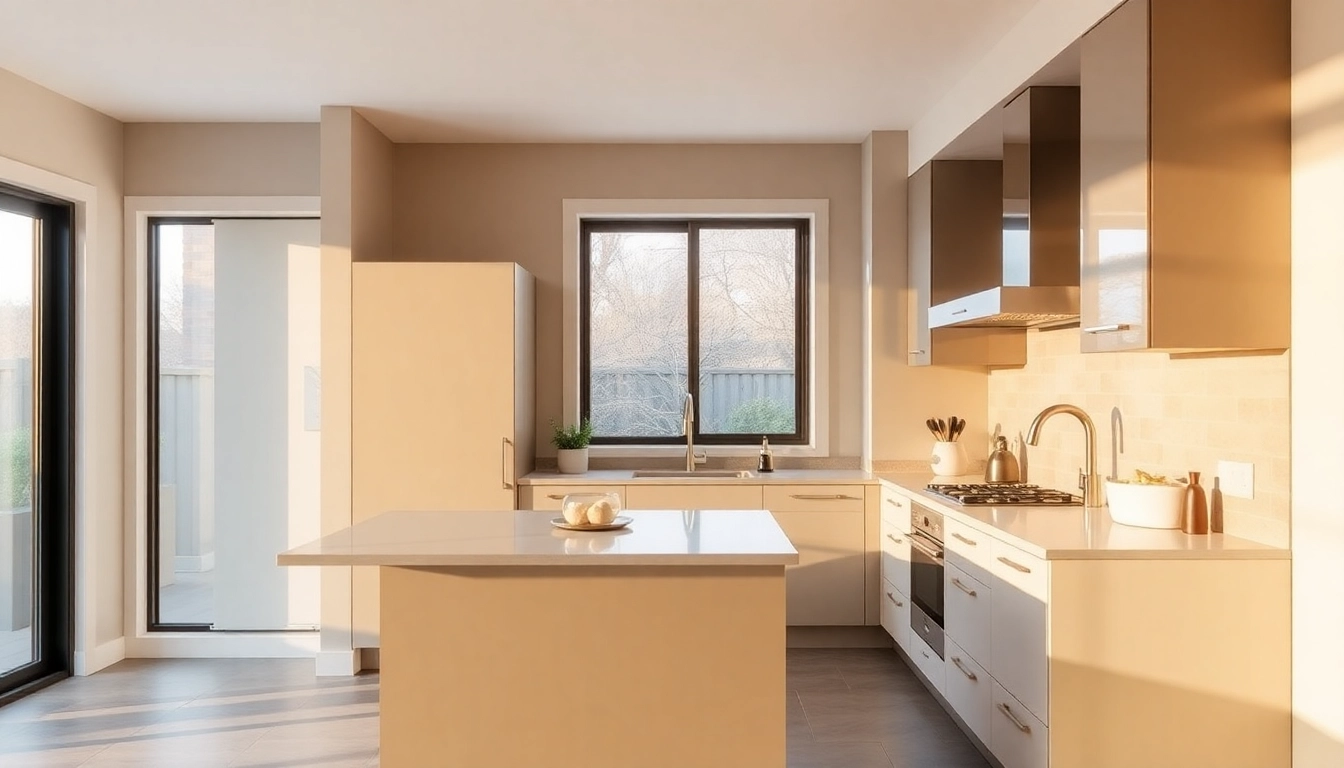Understanding Window and Door Replacement: Why It Matters
What window and door replacement entails
Replacement can involve retrofitting existing openings with new cores, glazing, and hardware or performing a full frame replacement that updates the sill, jambs, and casing. Decisions hinge on structural condition, the desired level of energy performance, and long-term maintenance expectations. A precise measurement protocol, correct weather sealing, and proper flashing are essential to prevent air leaks, water intrusion, and lasting performance issues.
Key benefits: energy efficiency, security, curb appeal
Energy efficiency reduces utility costs and enhances indoor comfort by minimizing drafts and seasonal temperature swings. Modern frames and glass also boost security through reinforced hardware and multipoint locking systems. Curb appeal matters too: a cohesive set of well-chosen windows and doors can elevate a home’s exterior aesthetics, increase resale value, and improve natural light distribution inside rooms. Consider a balanced approach that aligns performance with architectural style for the best long-term value.
Common myths about replacement projects
Myth: replacement is always expensive and disruptive. Truth: timing, material choices, and a staged installation can control costs and downtime. Myth: new windows must be fully custom to work. Truth: standard sizes and engineered retrofit options fit most homes with efficient performance. Myth: replacement guarantees instant savings. Truth: benefits accrue over years through energy savings, reduced maintenance, and improved comfort that compound with time.
Planning Your Window and Door Replacement: Assessments, Budget, and Timeline
Assessing current windows and doors
Begin with a condition audit: check for condensation between panes, persistent drafts, condensation on frames, sticking hardware, and glazing failures. Assess the frame material for water damage, rot, or warping. Evaluate the surrounding structure—sill integrity, flashing, and weather barriers—to determine whether a retrofit suffices or if a full-frame replacement is necessary.
Budgeting for window and door replacement projects
Budgeting should encompass product cost, installation labor, and potential add-ons such as flashing upgrades or reframing. While vinyl tends to be the most cost-effective option, wood and fiberglass offer longevity and aesthetics that may justify higher upfront prices. Budget for energy-efficient glass packages (Low-E coatings, gas fills, and multiple panes) and hardware upgrades that affect security and ease of use. Plan for a contingency to handle surprise structural repairs, which are not uncommon in older homes.
Timeline for window and door replacement installation
A typical project unfolds in stages: initial assessment and measurement, ordering and fabrication, and on-site removal followed by installation and sealing. Lead times vary by material and season, so scheduling a buffer for weather-related delays helps avoid rushed mistakes. Allow for a final inspection and any touch-ups to ensure long-lasting performance.
Materials and Styles for Window and Door Replacement
Vinyl, wood, and fiberglass options for window and door replacement
Vinyl is affordable, low-maintenance, and resistant to moisture—but it offers limited color and texture options. Wood provides natural beauty and potential refinishing flexibility, at the cost of higher maintenance. Fiberglass combines durability with low maintenance and a modern aesthetic, often at a mid-range price. Your choice should balance budget, climate, maintenance tolerance, and the home’s architectural language.
Glass options and energy ratings for window and door replacement
Glass selections drive comfort and operating costs. Consider double- or triple-pane configurations with Low-E coatings, inert gas fills, and appropriate spacer systems. Higher performance ratings reduce heat transfer and draft risk, and choosing components with Energy Star certification can guide satisfying efficiency standards while supporting long-term savings.
Front door styles, security features, and finishes
Front doors come in steel, fiberglass, and wood variants. Steel doors offer strength and cost effectiveness; fiberglass doors resist warping and dents and accept various finishes. Multipoint locking systems, reinforced hinges, and secure weather seals enhance protection. Finishes range from painted solid colors to wood-grain veneers, allowing the entry to complement the home’s style while maintaining durability in diverse climates.
Installation Process and Quality Assurance for Window and Door Replacement
Measuring, removal, and sealing for window and door replacement
Accurate measurement at multiple points prevents fit issues. Proper removal avoids frame damage and ensures clean openings. Sealing with high-quality flashing, weather barriers, and caulking is essential to prevent air and water intrusion. A well-executed install minimizes gaps that can lead to mold growth and energy inefficiency.
Installation best practices and warranties for window and door replacement
Choose installers with proven credentials, defined project scopes, and transparent warranty coverage. Warranties typically cover defects in materials and workmanship for a period ranging from 5 to 20 years, with some components offering extended coverage. A reliable warranty provides peace of mind and protects your investment against unforeseen issues.
Common installation pitfalls in window and door replacement and how to avoid them
Pitfalls include inaccurate measurements, improper flashing, insufficient insulation around the frame, and rushed sealing. To avoid them, require a detailed on-site plan, verify product tolerances, and insist on a final walkthrough to confirm fit, operation, and seal integrity before closing up walls.
Performance, Maintenance, and Value after Window and Door Replacement
Maintenance tips to maximize lifespan
Regularly clean and lubricate moving parts, inspect seals for wear, and repaint or refinish exposed wood as needed. Clean weep holes to prevent moisture buildup and address fogging issues promptly when they appear. Routine maintenance reduces the likelihood of early replacements and sustains performance gains.
Performance metrics for window and door replacement post-install
Post-install performance can be assessed through comfort levels, observed drafts, and energy consumption trends. A well-installed system should show reduced drafts, improved indoor climate stability, and measurable energy savings over seasons. Periodic professional checks can validate that installations maintain air-tightness and proper drainage.
Case studies: real-world results
In one renovation, a mid-century home upgraded to low-E, double-glazed units with fiberglass frames, resulting in a noticeable drop in heating bills and a quieter interior. Another project replaced aging exterior doors with steel-front models and multipoint hardware, enhancing security and lowering maintenance needs. These examples illustrate how material choice and installation quality translate into tangible benefits over time.

